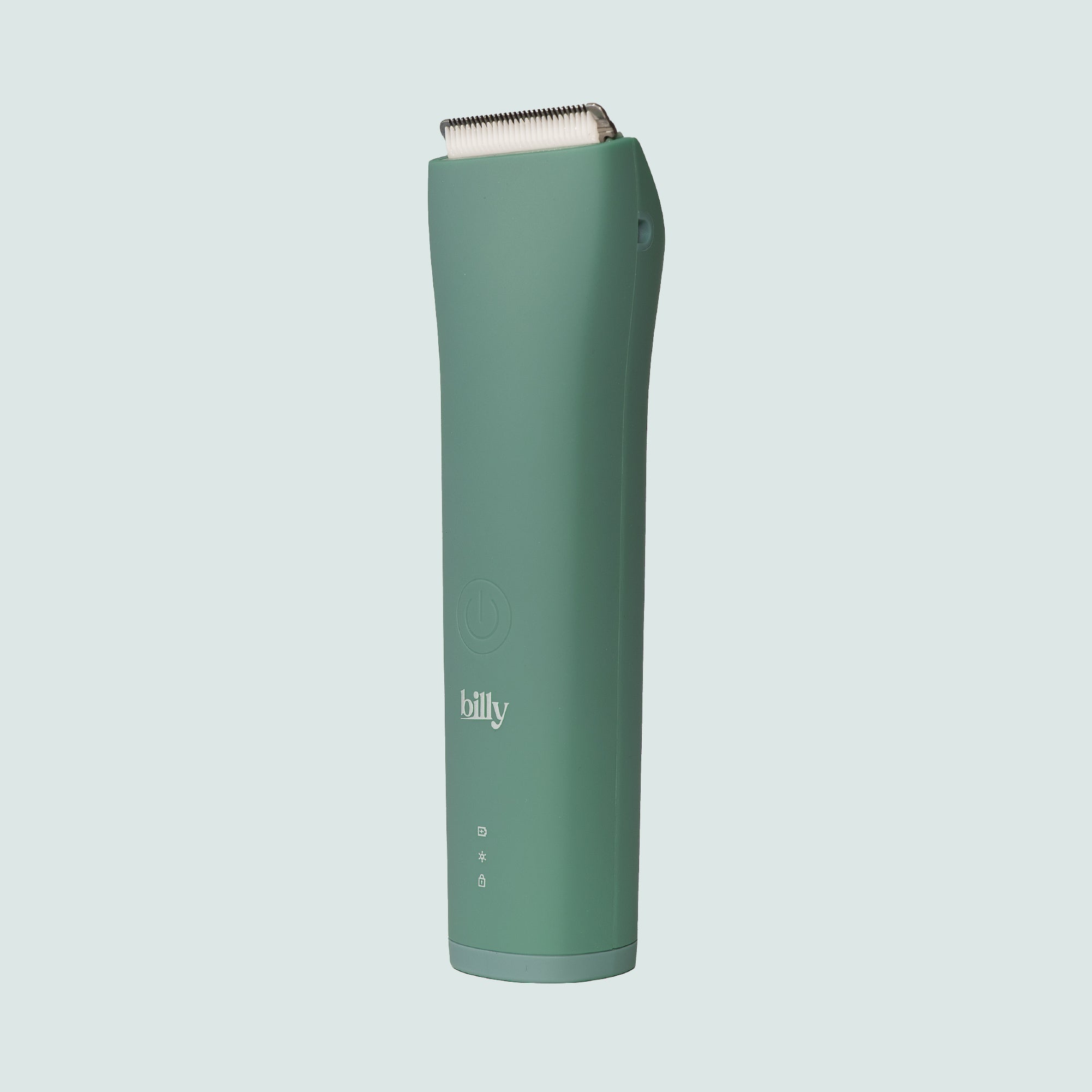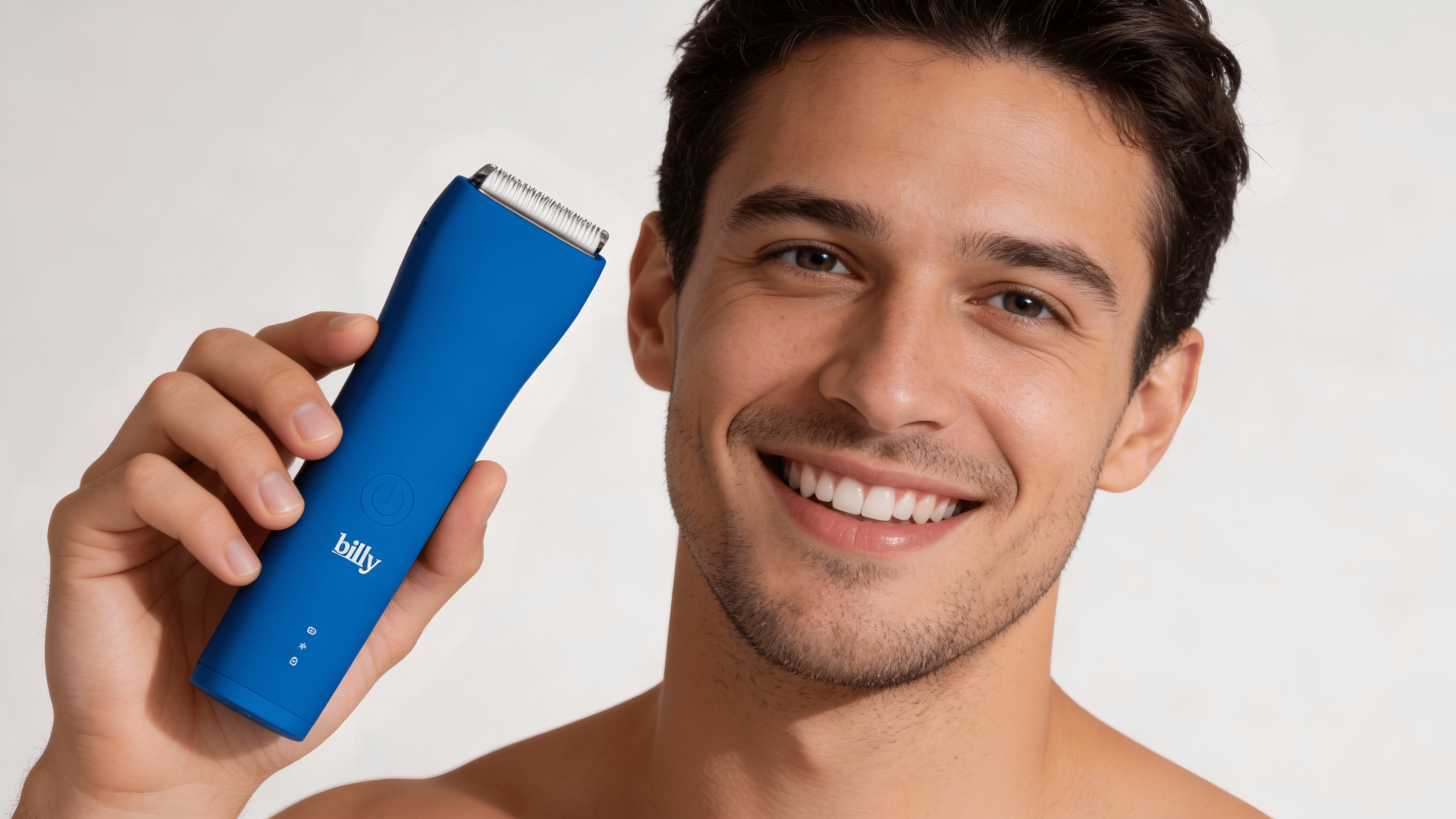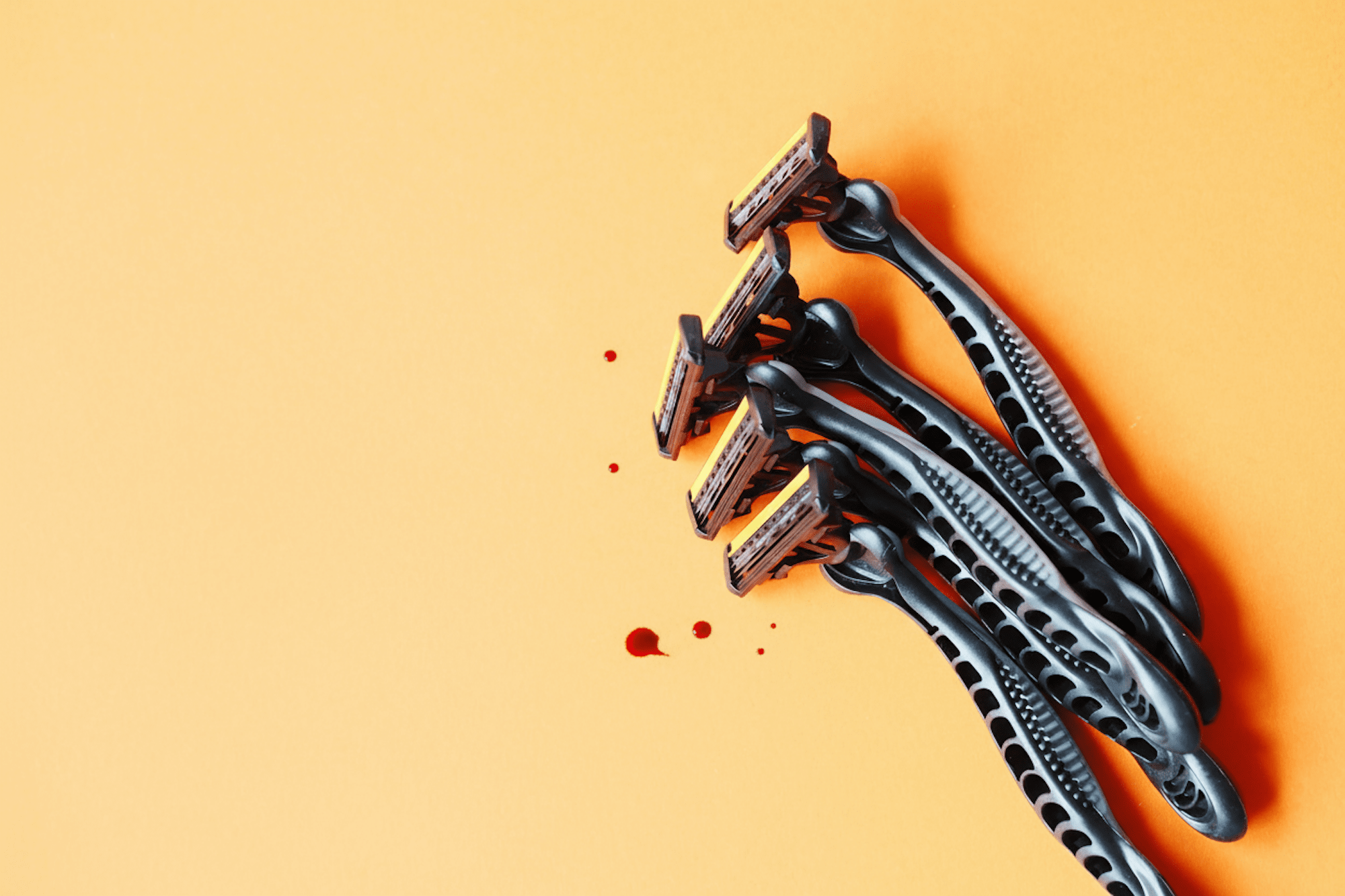In 2025, let's talk frankly about ingrown hairs. With 82% of young men (15-25 years old) regularly waxing, it's a more common problem than you might think. And you know what? It's preventable. Here's the complete guide to understanding and managing these little traitors that ruin our lives.
What is an ingrown hair?
Imagine a rebellious hair that, instead of coming out wisely, decides to turn around under the skin. Result? Inflammation, redness, and sometimes infection. Men are particularly affected because of their thicker hair (thanks testosterone).
Critical areas in humans
- Neck and beard (50% of men shave closely)
- The pubis and private parts
- Armpits
- The torso
- The crotch
Fun fact: We all have about 5 million hairs on our bodies. The difference? Men tend to have thicker, curlier hairs, which are more likely to become ingrown.
Why does this happen to us?
Let's be honest: ingrown hairs are a bit of a silent epidemic among men. The number one cause? Shaving too short. By trying to shave everything close, we give these little buggers the perfect opportunity to get back under the skin. Add to that naturally thick or curly hair (thanks to genetics), and you have the perfect recipe for trouble.
But that's not all. Our shaving technique also plays a big part. A bad angle, too much pressure, or the famous "wrong way" that we all do while thinking we're doing the right thing... And bam, another hair decides to turn around! Not to mention the dead skin that builds up and blocks the hair from coming out, or our clothes that are too tight that rub and make the situation worse.
And you know the worst part? We're kind of pushed into it. When 46% of women consider male hair removal to be important (and even 56% among 25-34 year olds), we inevitably feel obliged to use the razor more often than we should. Result? The more we shave, the more we risk ingrown hairs. It's the snake biting its own tail!
Fortunately, in 2025, we finally have the solutions to manage all this intelligently. The key? The right equipment and the right technique, for a shave that respects your skin while maintaining the style you want.
The main causes
- Shaving too short or poorly adapted (most common)
- Naturally thick or curly hair
- Incorrect shaving technique
- Accumulation of dead skin
- Clothes too tight
Social pressure
- 46% of women find it important for a man to shave
- This figure rises to 56% among 25-34 year-olds.
- Result? We shave more, therefore more risks
How to avoid ingrown hairs?
Let's not kid ourselves: prevention is better than cure. And when it comes to ingrown hairs, prevention starts with choosing your equipment. First golden rule? Forget your classic razor for sensitive areas. What you need is a real, suitable trimmer, with a protective guide that prevents cuts and maintains the right length.
Because yes, the famous "close-cropped" that many are looking for is often the source of the problem. Keep a short length (3-4mm is ideal), your hair will thank you. It's like a lawn: too short, it suffers; at the right height, it breathes.
Exfoliation is your best friend. Think of it as a little massage for your skin, once or twice a week, with a soft brush. No need to go at it like you're scrubbing a pan—gentle but consistent is key. It helps the hairs come out straight and prevents dead skin from building up.
Equipment-wise, invest in quality. A good clipper with a real guard (like Billy's) is the basics. Add to that non-comedogenic moisturizers (meaning they don't clog pores) and a gentle exfoliation brush, and you have your perfect ingrown hair kit.
Last tip that changes everything: let your skin breathe. Clothes that are too tight are the number one post-shave enemy. Think cotton and loose clothing, especially the first 24 hours after a shaving session.
Prevention that really works
- Use a clipper suitable for sensitive areas
- Keep a small length (0mm is a no)
- Exfoliate regularly but gently
- Moisturize your skin
- Wear breathable clothes
The material that makes the difference
- A mower with a real protection guide
- Always clean blades
- Non-comedogenic moisturizers
- A soft brush for exfoliation
Solutions for existing ingrown hairs
Spotted an ingrown hair? First thing: breathe. Second thing: DON'T TOUCH. We know, it's tempting to play amateur surgeon with your fingernails or tweezers, but that's the best way to turn a small problem into a big hassle.
Emergency actions that really work
First, the hot compress: it's your best friend. Ten minutes, two to three times a day, like a little spa for your unruly hair. The heat helps to unblock the situation naturally. Follow up with an alcohol-free soothing gel (alcohol is for the aperitif, not for your skin), and let your skin breathe. The more it breathes, the faster it heals.
The beard and neck: sensitive area
The neck is a bit of a favorite playground for ingrown hairs. The solution? Forget about shaving against the grain, even if it itches. Keep the length to at least 3mm (yes, even if you like the "just-come-from-the-barber" look), and please, change your blade regularly. A worn blade is like cutting bread with a butter knife: it pulls and irritates.
Private parts: instructions for use
For the VIP area, we take extra precautions. Rule number one: invest in a trimmer that’s specially designed for sensitive areas. It’s like buying snow tires for the winter—it’s not an option, it’s a necessity. Keep the length to a minimum of 3-4mm (the sweet spot between style and safety), and forget about tight post-shave underwear. Your skin needs a vacation, not a vice.
Moisturizing is crucial, but beware of scented products. Your intimate area deserves better than a cocktail of synthetic fragrances. Opt for neutral products, specially designed for sensitive areas.
By following these tips, you will turn a critical situation into a temporary inconvenience. And remember: patience is your best ally in this battle!
Immediate treatment: life-saving actions
- Do not scratch or puncture (even if it is tempting)
- Apply a hot compress (10 minutes, 2-3 times/day)
- Use a soothing gel (alcohol-free)
- Let the area breathe
Zone by zone: the appropriate solutions
For beard and neck (most affected area)
- Shave in the direction of the hair growth only
- Avoid tight collars after shaving
- Prefer a length of at least 3mm
- Change blade regularly
For intimate parts (the delicate area)
- Use a special trimmer for sensitive areas
- Maintain a minimum length of 3-4mm
- Avoid tight underwear after shaving
- Moisturize with unscented products
The anti-ingrown hair routine that works
The key to avoiding ingrown hairs? A simple but effective routine. No need to spend hours in the bathroom or have 36 different products. Let's take a look at the essentials.
The routine that changes everything
First reflex in the morning: cleanse gently. Forget harsh soaps that strip everything in their path. Your skin is not the deck of a boat, it deserves gentleness. A gentle, fragrance-free cleanser does the job perfectly.
Exfoliation is like housework: you don't have to do it every day, but you should do it regularly. Once or twice a week is enough. Think "stroking" rather than "scrubbing"—the goal is to help the hairs come out, not to traumatize your skin.
Hydration is non-negotiable. Just like a plant needs water, your skin needs hydration. Choose a cream that is suited to your skin type and the area of concern. And what about clothing? The looser the better. Let your skin breathe, and it will repay you.
Warning signs not to ignore
Let's stop playing hardball: there are certain signs that should make you react. An inflammation that makes you think of a traffic light? A pain that makes you walk like a robot? A heat that makes you think you're hatching something? Head to the doctor.
Same thing if the redness starts playing Pac-Man and spreads, or if after a week your ingrown hair is still there taunting you. It's not weakness to consult, it's common sense.
The golden rule? Prevention is better than cure. A simple but regular routine will save you 90% of problems. And for the remaining 10%? Don't wait until it gets worse to react.
Everyday life
- Gentle cleaning (no harsh soap)
- Light exfoliation (1-2 times a week)
- Appropriate hydration
- Loose clothing
Signs that should alert you
Consult if:
- Significant inflammation
- Severe pain
- Abnormal heat
- Redness that spreads
- Problem that persists for more than a week
Ingrown Hair Remedies: The Truth About It
You can find everything on the internet when it comes to treating ingrown hairs. Between grandmother's remedies and "miracle solutions" from influencers, it's hard to find your way around. Let's take a look at what REALLY works and what you should avoid at all costs.
Solutions that really work
Let's start with the tried and tested basics. The hot compress? A real miracle. It's like a mini sauna for your stubborn hair: it dilates the pores, soothes, and helps the hair come out naturally. 10 minutes twice a day, and you'll feel the difference.
Pure aloe vera is your best ally. This plant is not a legend: its anti-inflammatory and soothing properties are scientifically proven. Same thing for tea tree oil (provided you dilute it, otherwise hello burns). It's like a little natural doctor for your skin.
Gentle scrubs? Yes, but gently. Think delicate massage rather than intensive stripping.
The traps to absolutely avoid
Now, let's talk about the DON'Ts. The first thing to avoid is scratching with your fingernails. It's like trying to open a lock with a hammer - it can only end badly.
Rubbing alcohol? No, no, no. Your skin is not a bar counter. Lemon? Unless you like the feeling of putting salt on a wound. And be wary of miracle cures on the internet that promise results in 24 hours. If it sounds too good to be true, it is.
The secret? Keep it simple and natural. Your skin doesn't need harsh chemicals or questionable recipes to heal. Patience and gentle remedies are your best allies in this battle against ingrown hairs.
What works
- Hot compresses
- Pure Aloe Vera
- Tea tree (diluted)
- Gentle scrubs
What does NOT work
- Scratch with your nails
- Internet “miracle” cures
- 90° alcohol
- Lemon (ouch)
Prevention 2025
New technologies
- Clippers with special anti-ingrown hair protection guides
- Anti-pull systems
- Built-in LED to better see where you are cutting
- Ceramic blades that cut in the direction of the hair
The modern routine
- Preparation: hot shower
- Suitable tool: special trimmer for sensitive areas
- Technique: gentle and precise movements
- After: Soothing and moisturizing care
By 2025, with the right equipment and techniques, ingrown hairs should be the exception, not the rule. The key? Prevention, proper equipment, and a regular routine.


![Poils incarnés homme : causes, solutions et prévention [Guide Complet 2025]](http://billy-trimmer.com/cdn/shop/articles/billy-482.min.jpg?v=1743179711&width=3000)



















Share on your networks: